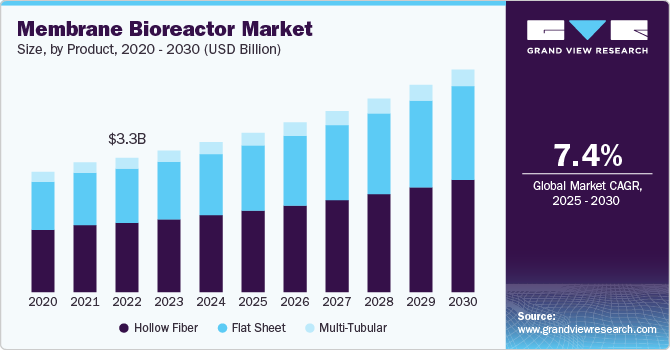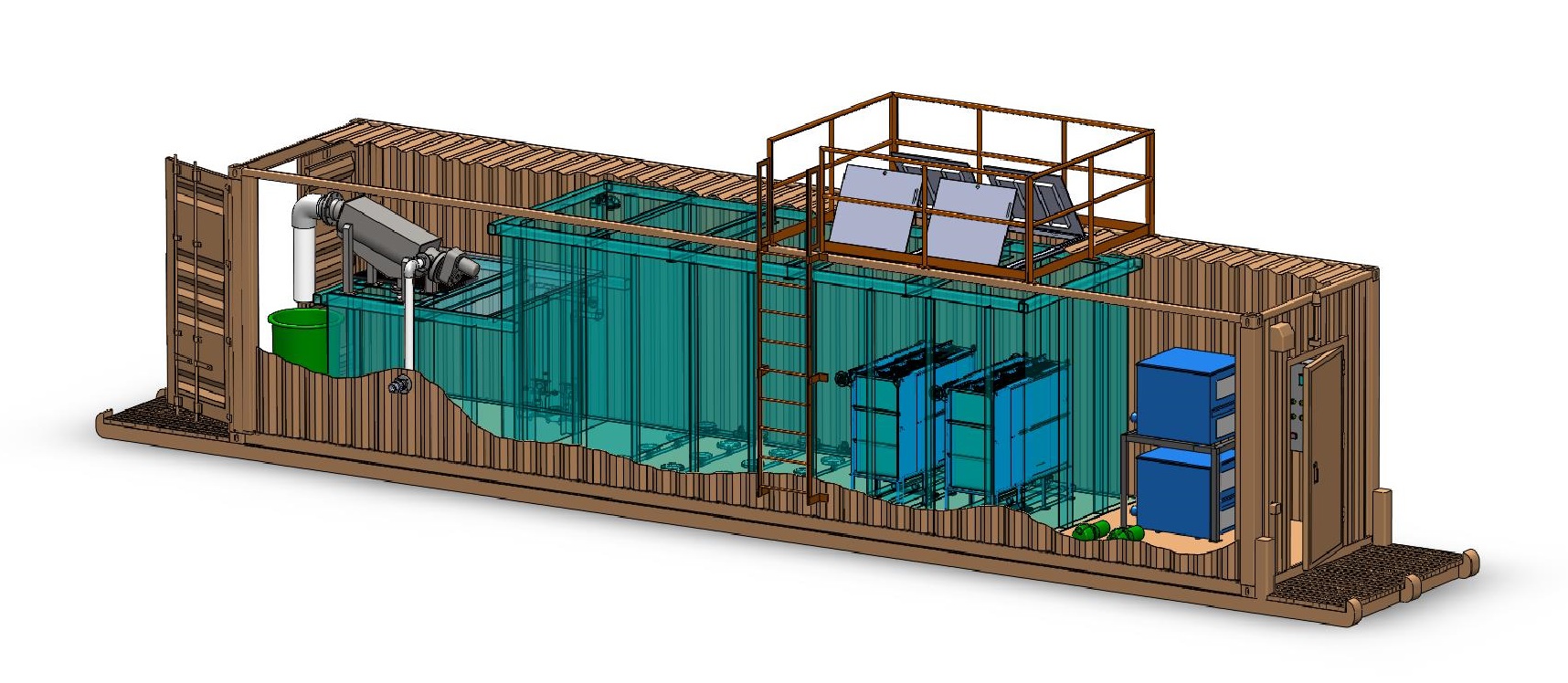Membrane Bioreactor as a Sustainable Solution for High-Volume Wastewater Treatment
Membrane Bioreactor as a Sustainable Solution for High-Volume Wastewater Treatment
Blog Article
Just How Membrane Bioreactors Are Reinventing Water Purification Solutions
The emergence of membrane layer bioreactors (MBRs) represents a substantial improvement in the field of water filtration, merging organic treatment processes with cutting-edge membrane purification innovations. This assimilation not only improves the top quality of dealt with effluent but likewise addresses city space restrictions, making MBRs especially suitable for densely inhabited locations. As global water shortage magnifies, the role of MBRs in promoting potable water reuse and sustainable water administration comes to be increasingly critical. The ramifications of this technology expand past performance-- what challenges and opportunities exist in advance for its widespread implementation?
Introduction of Membrane Layer Bioreactors
Membrane bioreactors (MBRs) represent a significant innovation in water filtration technology, as they incorporate organic treatment procedures with membrane filtration. This combination enhances the effectiveness of wastewater therapy by making use of bacteria to degrade organic pollutants while concurrently employing semi-permeable membrane layers to different cured water from put on hold solids and pathogens.
The MBR system generally contains an organic activator where the microbial populace metabolizes pollutants, complied with by a membrane filtering device that preserves biomass and permits only tidy water to pass through. This twin performance leads to greater effluent high quality contrasted to conventional therapy techniques. MBRs can be run in both set and constant flow settings, offering flexibility in style and application.
They additionally make it possible for the healing of water for reuse, thus adding to water sustainability initiatives. Overall, MBRs are at the center of improving water treatment effectiveness and high quality, showcasing the potential for innovative remedies in ecological management.
Advantages of MBR Technology
The integration of biological treatment with membrane filtration uses countless benefits for water filtration procedures. One of the primary benefits of Membrane Bioreactor (MBR) innovation is its capability to successfully get rid of both inorganic and natural contaminants, resulting in top notch effluent. The membrane layers function as a physical barrier, protecting against put on hold solids and pathogens from going through, which enhances the overall safety and reliability of treated water.
Additionally, MBR systems require a smaller sized footprint compared to standard therapy approaches, permitting a lot more reliable area usage. This small design is particularly useful in metropolitan setups where land is limited. MBRs also show functional versatility, suiting differing influent high qualities and flow prices without substantial efficiency degradation.
Additionally, the process offers enhanced nutrient removal capabilities, specifically for nitrogen and phosphorus, which are vital for stopping eutrophication in getting waters. The minimized sludge manufacturing related to MBR innovation also equates to decrease disposal costs, making it an economical service in the future - Membrane Bioreactor. In general, the benefits of MBR innovation position it as a leading choice for cutting-edge and sustainable water purification systems, addressing both environmental and financial worries
Applications in Water Filtration
Applications of Membrane Layer Bioreactor (MBR) modern technology in water purification are impactful and varied, attending to different treatment needs throughout multiple sectors. MBRs effectively integrate biological therapy procedures with membrane filtering, making them optimal for metropolitan wastewater therapy, industrial effluent management, and even safe and clean water reuse efforts.
In local setups, MBRs are increasingly employed to improve the quality of treated wastewater, enabling compliance with strict discharge policies and promoting the recycling of water for irrigation and non-potable usages. Their compact style additionally makes them appropriate for metropolitan atmospheres where area is restricted.
Industrially, MBR modern technology is used to deal with procedure water and wastewater, specifically in markets such as food and beverage, pharmaceuticals, and textiles. By efficiently eliminating pollutants and suspended solids, MBRs help industries minimize environmental impacts while recovering valuable sources from wastewater streams.
Moreover, MBRs More Info are obtaining grip in decentralized water therapy applications, where small systems can be released in remote locations or creating areas. This flexibility allows areas to achieve sustainable water administration options, boosting accessibility to tidy water while decreasing reliance on typical therapy methods.
Case Research Studies and Success Stories

In one more example, a textile production facility in Bangladesh adopted MBR innovation to resolve its wastewater challenges. The system lowered chemical oxygen demand (COD) degrees from 1,200 mg/L to less than 100 mg/L, hence satisfying governing criteria and significantly decreasing environmental influence.
The College of Cape Community's MBR installation has actually confirmed effective in dealing with greywater for non-potable reuse on university. This job not just saves drinkable water however also serves as an educational design for sustainable practices.
In addition, a seafood handling plant in Norway made use of MBR innovation to deal with effluents containing find more information high levels of natural issue, accomplishing over 90% toxin removal. These study underscore MBR innovation's adaptability and its vital duty in improving water quality across diverse applications.
Future of Water Therapy Solutions
As worldwide water deficiency and air pollution challenges escalate, ingenious water treatment services are coming to be increasingly necessary to ensure sustainable access to tidy water. The future of water treatment exists in the combination of innovative innovations that improve the efficiency and performance of filtration processes. Membrane bioreactors (MBRs) are at the forefront of this evolution, integrating organic therapy with membrane filtration to create high-grade effluent ideal for numerous applications.

Arising patterns such as resource recovery from wastewater, including nutrients and power, will certainly additionally transform treatment facilities into eco-friendly centers. Developments in nanotechnology and membrane products guarantee improved efficiency and durability of filtration systems.

Conclusion
To conclude, membrane bioreactors stand for a considerable development in water filtration modern technologies, effectively incorporating organic therapy with sophisticated membrane layer filtering. The various advantages, including enhanced effluent high quality and decreased spatial needs, make MBRs particularly suitable for metropolitan applications. Their role in drinkable water reuse and sustainable water monitoring highlights their value in addressing international water scarcity obstacles. Proceeded study and growth will better boost the efficacy and fostering of MBR innovation, making certain a durable future for water therapy services.
The emergence of membrane bioreactors (MBRs) represents a considerable innovation in the area of water purification, view it merging biological therapy procedures with sophisticated membrane layer purification technologies. As global water scarcity heightens, the function of MBRs in facilitating potable water reuse and sustainable water management becomes increasingly vital. They likewise allow the healing of water for reuse, therefore contributing to water sustainability efforts.As worldwide water shortage and contamination challenges magnify, innovative water treatment solutions are coming to be significantly essential to ensure lasting accessibility to clean water. Their role in potable water reuse and lasting water monitoring highlights their value in dealing with global water scarcity challenges.
Report this page